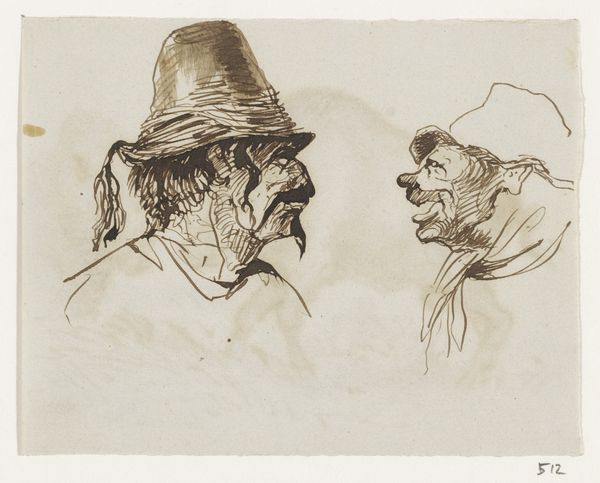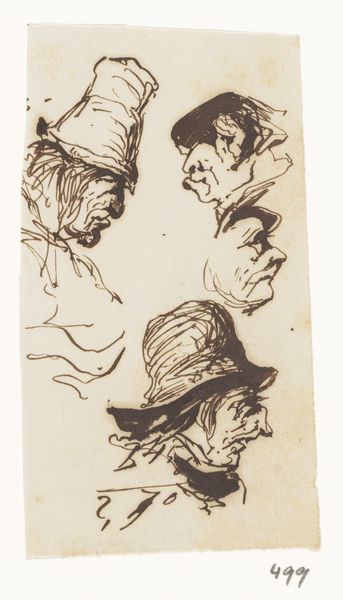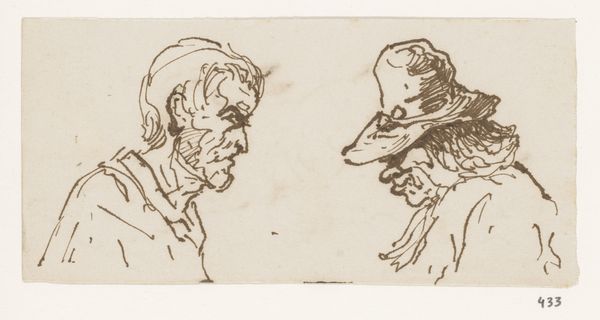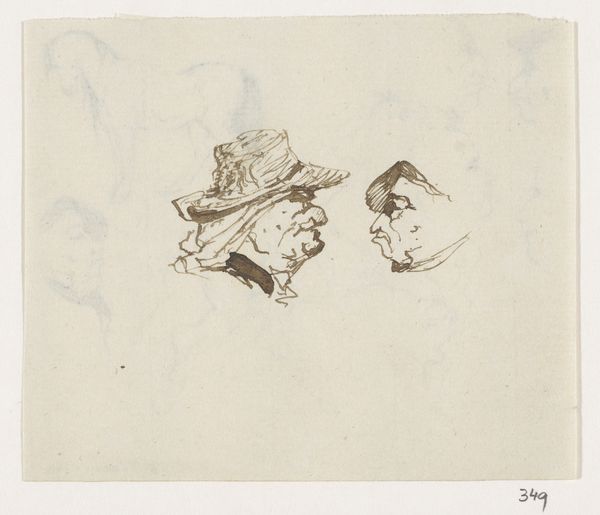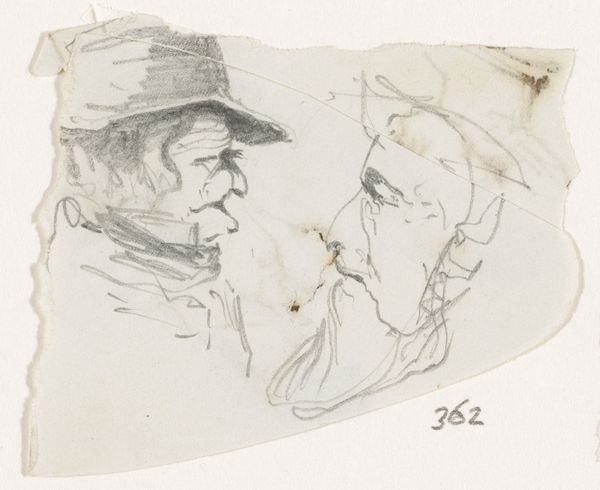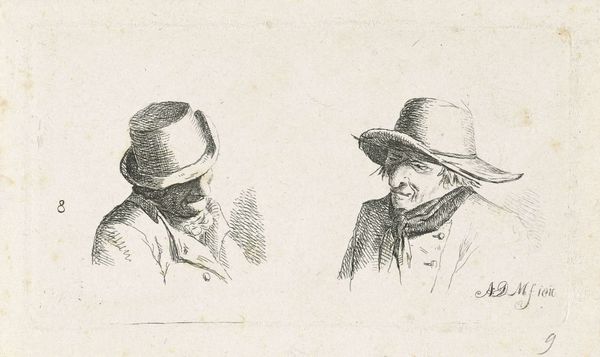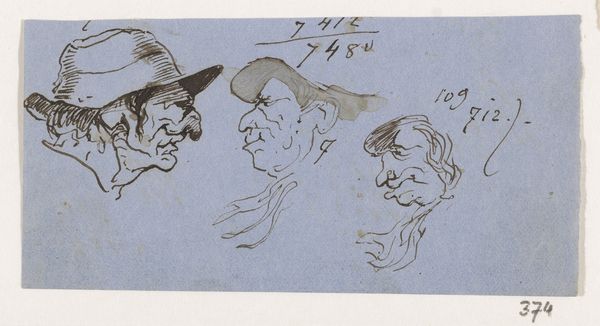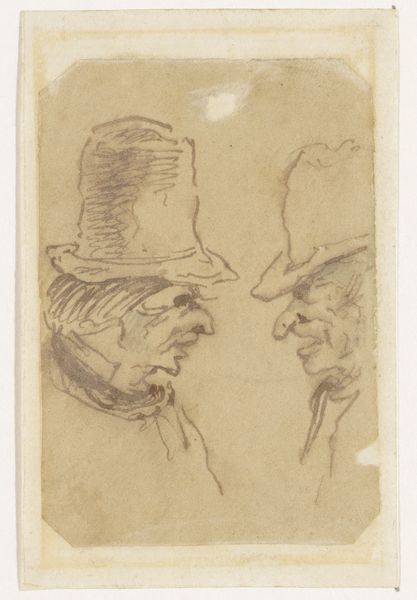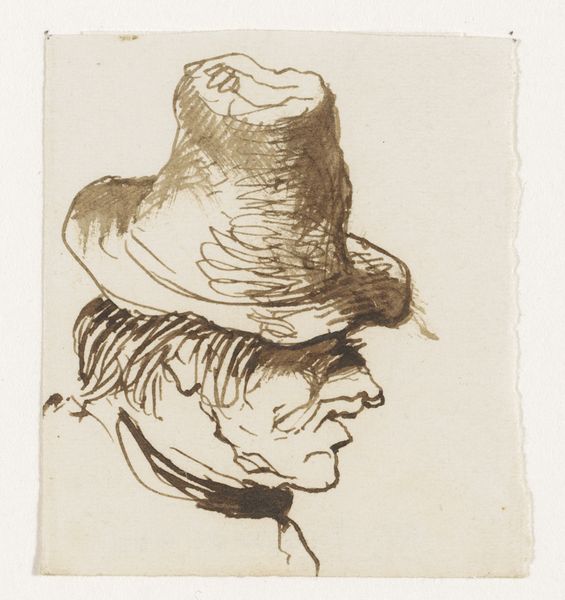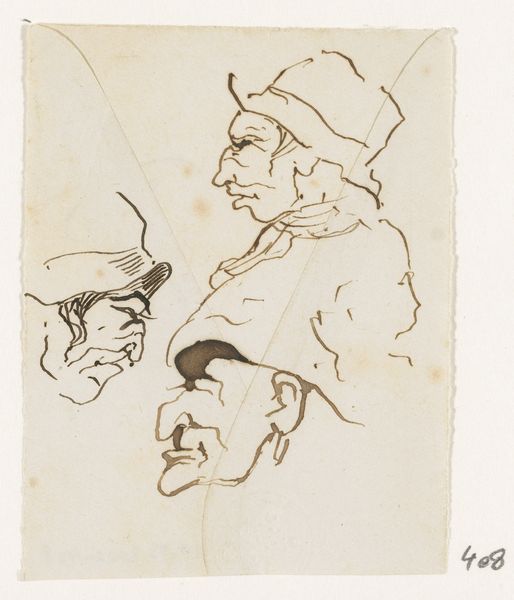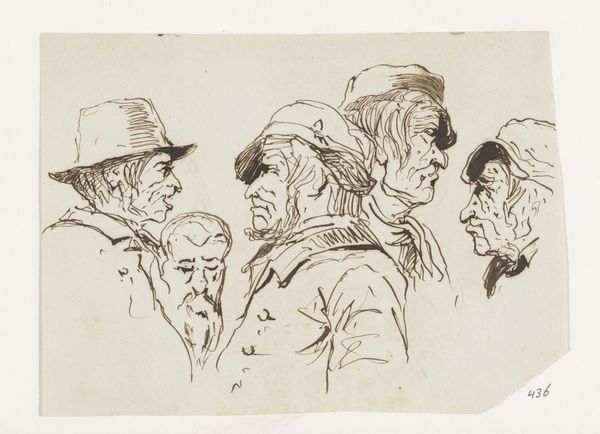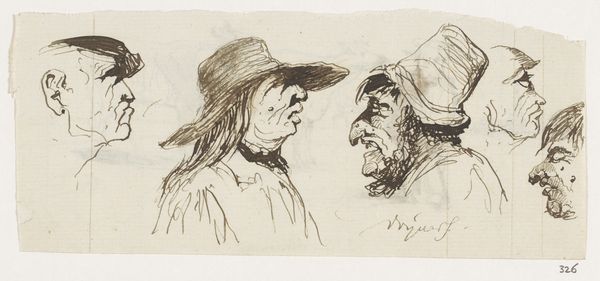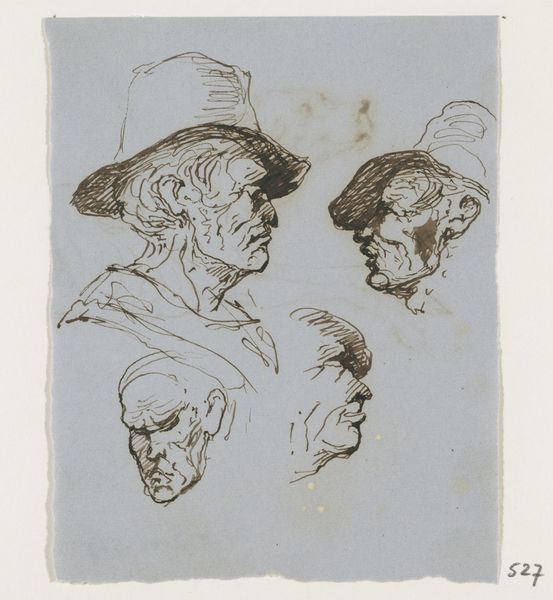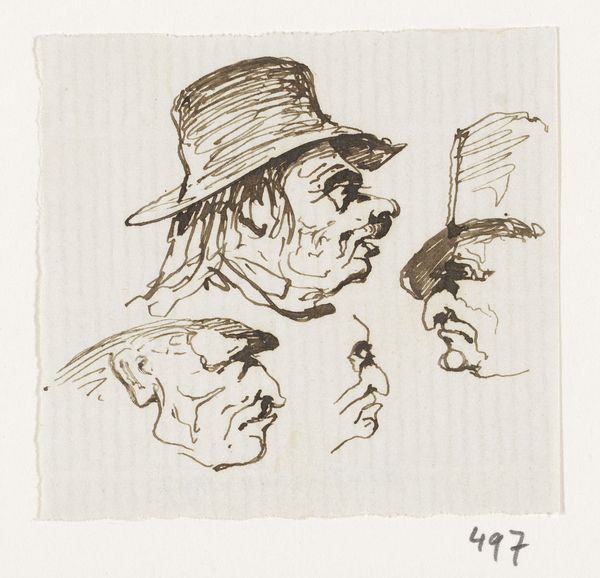
Dimensions: height 51 mm, width 76 mm
Copyright: Rijks Museum: Open Domain
Curator: Here we have a sketch from the Rijksmuseum, “Twee koppen met hoeden,” or “Two Heads with Hats,” created sometime between 1840 and 1880 by Johannes Tavenraat. It's an ink and pencil drawing on paper. Editor: My first impression is that they look like they’re up to something mischievous. Their faces are shadowed under the brims of their hats—a classic conspiratorial vibe, don’t you think? Curator: Perhaps, but consider the hats themselves. They’re practically cages around the wearers' thoughts, hatched with such density that it makes me wonder what these characters are hiding, or perhaps, protecting. Editor: Or are the hats a mark of belonging? A shared symbol amongst a certain group or profession? Hats often served as signifiers. Think of the Mad Hatter, the different color hats in literature which represent varied points of view. Curator: Exactly. The way Tavenraat renders them—these hatched lines—suggests both social coding and psychological complexity. The faces are almost caricatures, with the play of light and dark accentuating their features. The artist seems less interested in objective representation, and more fascinated by suggestion. Editor: There’s an intentional roughness in the lines, isn't there? The kind you often find when the artist is merely recording an idea, as in a personal sketchbook. It isn't smoothed over to create perfect resemblance, but captures a specific impression of how the figures look, and perhaps a subtle understanding of who they are. It feels wonderfully immediate. Curator: That immediacy pulls us into a sort of empathetic understanding. These figures are not polished portraits, but rather quick glimpses of souls that seem both familiar and strange. It is a testament to Tavenraat's sharp observations and rendering style that so much feeling can be expressed with so few strokes. Editor: Agreed. These faces resonate beyond their surface appearance; these are types, icons of their era and perhaps of human nature itself. The piece as a whole creates a vignette rather than a detailed study, yet we still sense that there is a greater world behind these faces.
Comments
No comments
Be the first to comment and join the conversation on the ultimate creative platform.
